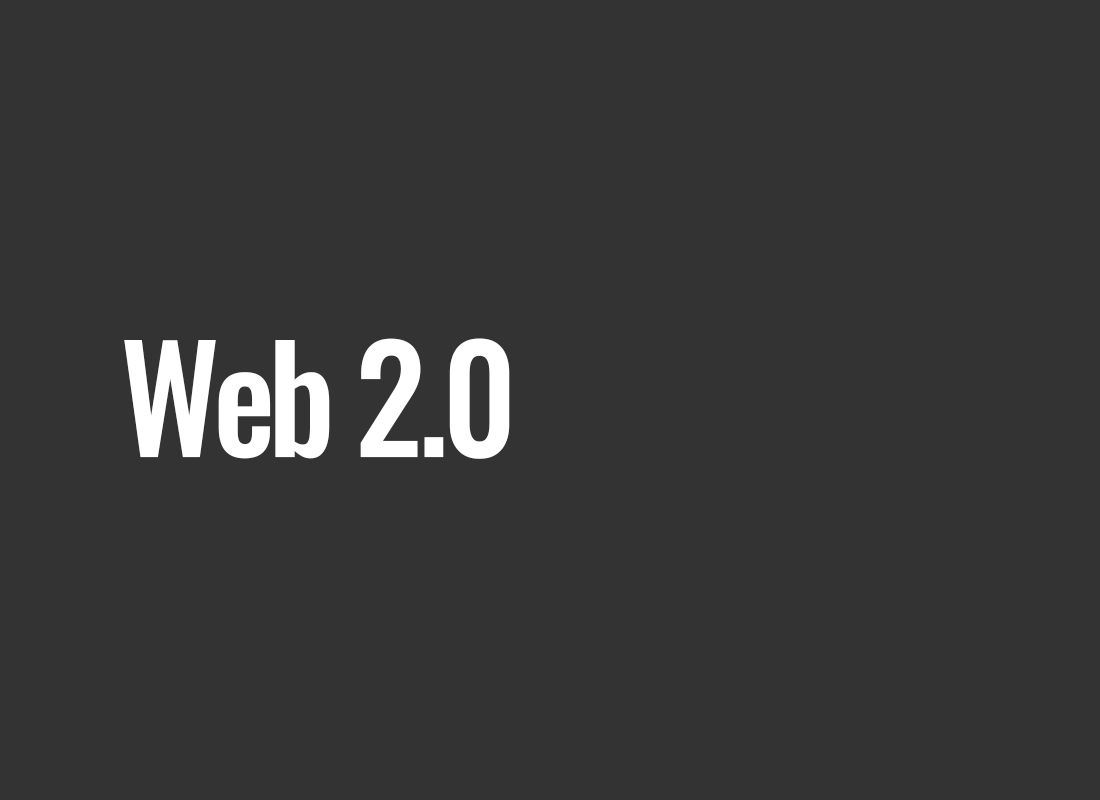Web 2.0
Web2.0 is a term that, since its inception in the early 21st century, has become one of the key concepts in the world of the internet. It's not just another stage of technological development but a complete shift in how we harness the potential of the network. Web2.0 transformed the internet from a space of static web pages into a dynamic environment where everyone can actively participate, create, and collaborate.
For many, especially those who remember the days of Web 1.0 where the internet was primarily a source of static information, the notion of Web2.0 might sound magical. However, it's not magic, but the evolution of the internet that opened the door to countless new opportunities, both in technology and in diverse areas such as UX (User Experience), e-commerce, marketing, business, and IT.
Web2.0 is primarily about interaction and collaboration. In previous years, internet users were merely passive recipients of content, with no influence over what happens on web pages. With the advent of Web2.0, this role dramatically changed. Now, users, not just content creators, shape the internet. They can create their pages, blogs, comment, like, and share other users' content. This interactivity is one of the main pillars of Web2.0.
But Web2.0 is not just about personal expression online. It's also a revolution in fields that leverage the internet's potential. UX, or user experience design, has become more comprehensive and tailored to individual users' needs. E-commerce has evolved into a growing market that offers increasingly personalized and intuitive online shopping. Marketing found a treasure in Web2.0 in the form of direct interaction with customers and dynamic opinion monitoring. Businesses had to adapt to customer feedback, and IT developed tools enabling dynamic and responsive websites.
Web2.0 Evolution: What Is It?
Web2.0 is much more than just a new version of the internet. It's a revolutionary concept that turned our approach to online interactions upside down. In this section, we will delve into the essence of Web2.0, examining its key features and influence on various internet aspects and related fields.
1. Interactivity as a key feature
One of the foundations of Web2.0 is interactivity. Unlike static web pages in the Web 1.0 era, Web2.0 focuses on active user participation. Now everyone can create and share content online. This significantly changed how we use the internet. Before, we were merely information recipients; now, we've become creators.
2. Responsiveness and content customization
Web2.0 is also the era of responsiveness. Websites ceased being static online posters. Now they're dynamic and adapt to users' needs. This means content is presented in a way best suited for a particular device, screen resolution, or user preference. An example is the growing popularity of responsive design, ensuring websites look and work well on computers, tablets, and smartphones alike.
3. Multi-platform and integrations
Another key feature of Web2.0 is its multi-platform nature. This means users can use the same services and apps across different devices and operating systems. Cloud computing is an example, allowing access to data and applications from any location and device.
Integrations are also a key element of Web2.0. Online services connect, enabling users to use various tools in one place. "Single sign-on" apps, which let you log into many services with one account, are examples, greatly simplifying data management and access.
4. Dynamic apps and AJAX
Web2.0 introduced dynamic applications enabling real-time interactions. Thanks to technologies like AJAX (Asynchronous JavaScript and XML), content on a page can be refreshed without reloading the entire page, making online apps more responsive and faster.
5. Content personalization
Another key aspect of Web2.0 is content personalization. With collected data and recommendation algorithms, websites and apps tailor content to individual user preferences. Amazon is an example, analyzing purchase history and user behavior to suggest personalized shopping suggestions.
In summary, Web2.0 is a revolution that changed how we use the internet. It's the era of interactivity, responsiveness, personalization, and integration. These features not only influenced internet technology development but also had a significant impact on areas like UX, e-commerce, marketing, business, and IT. In the next part of the article, we'll examine specific applications of Web2.0 in these fields and the effects this internet revolution has brought.




